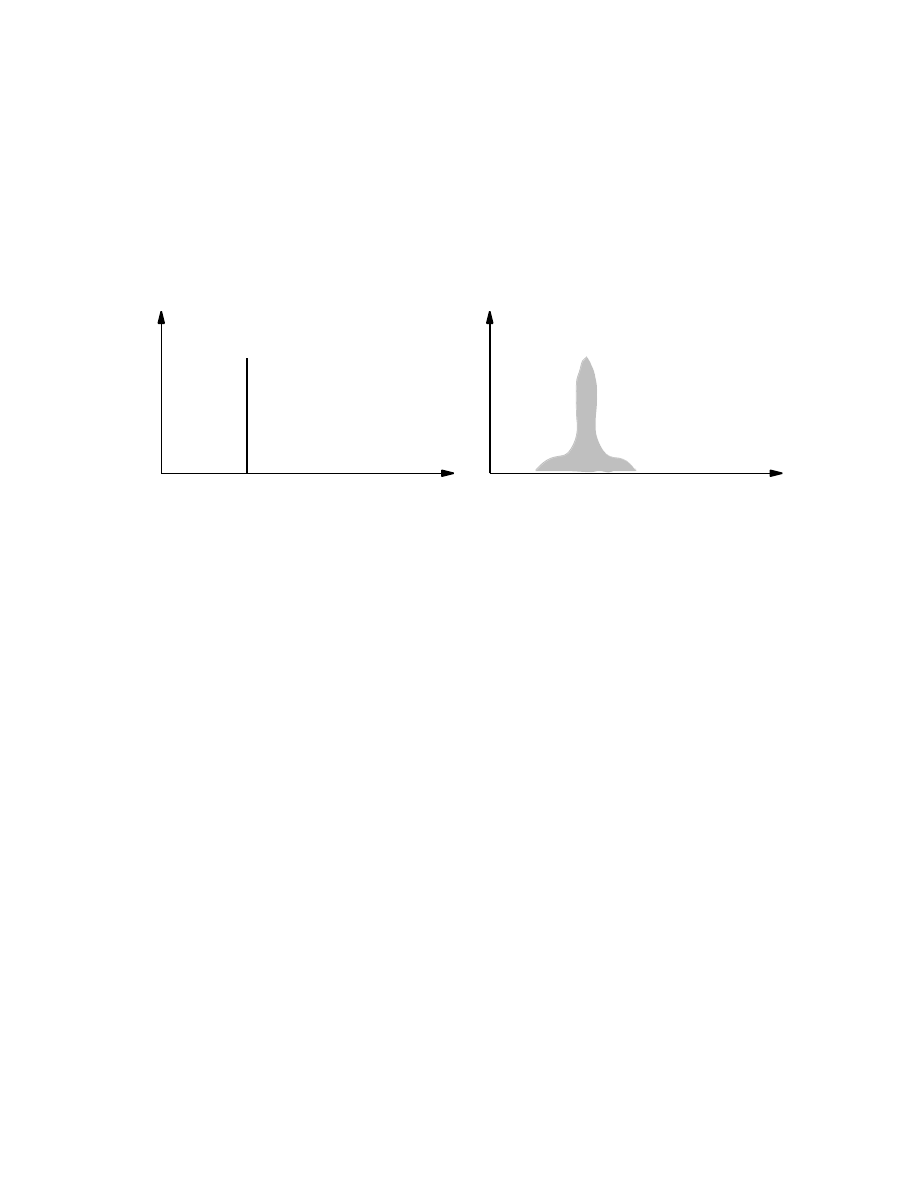ВУЗ: Казахская Национальная Академия Искусств им. Т. Жургенова
Категория: Учебное пособие
Дисциплина: Не указана
Добавлен: 03.02.2019
Просмотров: 12365
Скачиваний: 6

M
MIDI patchbay: Essentially a patchbay for MIDI signals. Passive patchbays simply present
MIDI In and MIDI Out sockets conveniently on a front panel to facilitate patching via patch-
cords. Active patchbays will generally have MIDI sockets on the rear panel, switches and
displays on the front panel, and will also have a memory which allows commonly used
patches to be stored. These, in turn, may be triggered by specific MIDI Program Change
messages sent to the unit. As all of this requires some processing power, an active patchbay
will often perform other functions such as MIDI Merge or MIDI mapping.
MIDI port: A means of bypassing the 16-channel limit of the MIDI specification by using a
MIDI interface with multiple MIDI sockets that carry totally independent signals and effec-
tively provide separate MIDI networks that function in parallel. Typically, there may be four
such sets of sockets, each socket representing one MIDI port that can be used for up to sixteen
channels. Such interfaces, which are generally the hub of a large MIDI network, are occa-
sionally built into master keyboards. More typically, they are add-on hardware devices at-
tached to a computer and will usually only operate in conjunction with sequencing software
from the same manufacturer.
MIDI Show Control (MSC): A protocol in the MIDI specification designed to integrate and
control stage equipment such as lighting, hydraulics, rigging, video machines, pyrotechnics,
and fog machines. MSC is intended to control dedicated equipment in theater, live perform-
ance, multimedia and audio visual applications.
MIDI slop: The timing variations which occur within a multitimbral tone generator. As sev-
eral different instrument sounds are generated on multiple channels, the machine must gen-
erate and output the notes in a short space of time, causing timing variations among the vari-
ous notes. This is not the same as MIDI delay.
MIDI Splitter: See MIDI Thru.
MIDI Sync: One of the synchronization protocols supported by MIDI, either MIDI Clock or
MTC.
MIDI Thru: There are two types of MIDI Thru. One, a simple hardware connection, is
found on the back panels of many synthesizers. The Thru jack, in this case, simply duplicates
whatever data is arriving at the MIDI In jack, being a hard-wired connection between the
two. Compare with MIDI Echo. Sequencers have a second type, called a Software Thru. In
this case, data arriving at the In-jack is merged with data being played by the sequencer, and
both sets of data appear in a single stream at the Out- (not the Thru-) jack. A Software Thru
is useful because it allows a master keyboard to be hooked up to the sequencer’s MIDI input
and a tone module to its output. The keyboard can they play and produce sound through the
tone module, and the sequencer can also send its messages directly to the tone module. Also
called a MIDI Splitter. See also MIDI Out/Thru.
midrange: A loudspeaker designed to reproduce the middle frequencies of the sound spec-
trum, generally most efficient between about 1kHz-4kHz.
midrange smear: A type of sonic degradation in sound reproduction systems that is the re-
sult of nonlinear frequency response in the playback chain which interacts with the broad band
of frequencies present in music, producing a veil of distortion products throughout the mid-
range frequencies, difficult to define and test. Also called grunge.

M
mil: Short for millinch, i.e., one-thousandth of an inch. Tape thicknesses and sometimes
widths are usually given in mils.
MiniDisc (MD): A digital format that uses Sony’s proprietary ATRAC (Adaptive TRansform
Acoustic Coding) data compression to fit up to 74 minutes of digital audio on a 64mm, re-
cordable, erasable magneto-optical disk. Commercial prerecorded MD releases use an opti-
cal-only playback format and are not recordable.
MD audio is compressed during recording,
using lossy compression, so that the audio quality has lower fidelity than the same data writ-
ten to a CD. See also Digital Compact Cassette, DAT.
mixdown: The process of bringing together separate tracks into a unified whole. The tracks
can be audio tracks (from hard disk or tape) or MIDI tracks (from a soundcard, tone genera-
tor, or digital keyboard) or a combination of both. Usually, at least three or more such source
tracks are mixed down to the left and right audio tracks of a stereo mastering deck (analog
tape deck, DAT recorder, or even a hi-fi VCR.)
mix: (1) (noun) The composite blend of live sounds and/or recorded virtual tracks to a new
program, usually of fewer tracks and often to a different recording/storage medium. (2)
(verb) To produce the new composite program, adding the live sounds, recorded virtual
tracks, effects and other processing such as equalization, compression, reverb, etc., ready for
the production of a recording of the desired number of tracks and on the desired recording
and/or storage medium, possibly for use as a master.
mixdown session: A recording session during which the separate tracks of a multitrack tape
are processed and combined or blended into two or more channels, then rerecorded onto a
multitrack recorder. The resulting tape is called the master tape and is the finished studio
product. The master is ready, at this stage, for dubbing.
mixed-mode: A mixed-mode CD includes more than one type of track format, usually Red
Book audio and Yellow Book Mode 1 (ECC) information. Mixed-mode consists of a ROM track
followed by any number of Red Book audio tracks. Mixed-mode has two problems: first, the
CD-ROM track can be accidentally read by some audio players, causing an ugly static sound
and potential speaker damage. Second, retailers don’t know whether to market the discs as
music or data. See pregap, CD Extra.
mixer: A device that adds two or more audio signals together. Also called a mixing console,
console, mixing desk, desk, mixing board, or just board. See also multiple mixer, split console, in-
line, channel path, monitor path.
mixing: (1) Using a mixer. (2) See slip cue.

M
mLan: A specification proposed as a part of the FireWire protocol standard which provides a
definition of how to send multiple sample-accurate AES3 signals, raw audio, MIDI and other
control information over a single 1394 cable. The specification reduces the clock jitter inher-
ent in the IEEE 1394 8kHz isochronous clock to about 40ns. Implementations of mLan go far-
ther, reducing the clock jitter among connected devices to less than 1ns. IEEE 1394 has
adopted a portion of mLan as an official supplemental standard for handing IEEE 1394 audio
and music control data; AES is also considering mLan, but is concerned that it is not suffi-
ciently accurate for professional studio use as, while mLan ensures that multiple 1394 nodes
are synchronized, the specification does not provide accuracy necessary to synchronize de-
vices using the IEEE 1394 network to carry different types of signals, such as noncoherent
audio, video, and/or musical control data.
MLP: Meridian Lossless Packing. A lossless file compression scheme developed by
Meridian Audio of Cambridge, England adopted for use by the DVD-A standard. MLP is
not a perceptual coding scheme, but instead, reduces the size of audio files without altering
their contents. MLP may be used on sampling rates up to and including 192 kHz of 24-bit
words, on up to 63 channels. The MLP compression process does not depend on
assumptions made about incoming data; instead, it works on the audio waveform, using
three proprietary technologies to reduce file size: first, non-data is removed from the audio
file; second, matrixing is used to reduce the correlation among channels using a large palette
of special filters. Lastly, Hufman coding is used to reduce the data rate by efficiently
encoding the most likely occurring successive values in the serial stream. MLP coding
produces variable-rate output data, and a proprietary data buffering scheme smoothes the
output rate to keep peaks from exceeding carrier bandwidth limits.
MMA: MIDI Manufacturers’ Association. See also AMEI.
MO: Magneto-optical. A type of removable digital storage medium used by several digital
audio recorders. MO drives are now typically in the 2-4Gb range. See LIMDOW.
mod: Short for (1) modulation or (2) modification.
MOD (.MOD): Short for module. A compact type of computer file, originally developed on
the Amiga, that plays back audio files when loaded into a MOD player. MOD files are a cross
between MIDI and digital audio files, containing both digital samples and playback instruc-
tions that tell the player which notes and samples to play, i.e., MOD files include a user-
defined group of digitized instrument sounds that are used to play the music. Basic MOD
files contain just four tracks of 8-bit mono audio data: various sampling rates are used; the
data can be compressed; and, each track can trigger any one of up to 31 samples from the
MOD file for four-voice polyphony. Each instrument can have its own volume, and a few
simple effects are included, such as echo and pseudo-reverb (achieved by repeating notes),
tremolo, and pitch-bend. Most MOD files are in the
.STrK
format, but there are other file
formats such as
.S3M
. There is a recent trend toward 8-channel MOD players, threatening
compatibility.
mode: (1) See room mode; (2) Scales which became established in the Middle ages; (3) rhyth-
mic modes of mediæval music which were classified into six patterns which corresponded to
poetic rhythms.
modem: A device (MOdulator/DEModulator) that allows digital information to be sent over
an (analog) telephone line.

M
moderato: A moderately fast tempo, about 95-115 bpm.
modifier module: A synthesizer module which takes raw sound and modifies its timbre
(tone) or its amplitude (volume) in some way. In most synths, these modules include filters
and amplifiers. Also called a modulator. See also VCA, VCF.
modular digital multitrack (MDM): Multitrack recording systems which record digital
audio data on a videocasette, using a rotating drum in the same manner as a DAT recorder.
MDMs are typically expandable by locking together multiple MDM modules. There are two
MDM standards: the Alesis ADAT and compatibles which record on S-VHS tape, and the
Tascam DA-88 and compatibles, which record on Hi-8mm tape. Examples of MDMs include
the Akai A-DAM, Alesis ADAT, Tascam DA-88 and Yamaha DMR8/DRU8. Also called a
modular recorder.
modular recorder: See modular digital multitrack.
modular synthesizer: A type of synthesizer developed in the 1950’s and popularized in the
1970’s in which the components, such as controllers, oscillators, filters and amplifiers are de-
signed as separate devices and interconnected by patch cords. Every module has input and
output sockets that are used for interconnecting with the others. They don’t have MIDI ca-
pabilities, memories, or presets, and they very rarely have hard-wired internal connections,
all connections being “modular” via patch cords. The underlying principle of modular syn-
thesis is voltage control, used to control VCOs, trigger an ADSR envelope. Also, in modular
synthesis, there is little or no difference between audio and modulation signals, e.g., the
audio output of a VCO can be used to modulate the control input of a second VCO, and a
mixer can mix control voltage signals just as an audio mixer would.
modulation: (1) The process of sending a control signal to a sound source so as to change the
character of the sound while the sound is playing. The modulation signal tells the receiving
module to do something to the sound by changing one of its parameters in a predictable way.
The place where a modulation signal originates is referred to as a modulation source. The
place where the receiving module accepts the control signal is called a modulation input. For
example, in a synthesizer, MIDI Velocity messages can be used to modulate the rolloff fre-
quency of a filter. An envelope generator modulating an amplifier’s amplitude setting causes
the signal’s level to change over time. (2) Changing a carrier signal in such a way as to carry
information, e.g., amplitude or frequency modulation. (3) In music, a change of key. (4) The
variation in the normally geometric groove on a record, which encodes the audio signal. (5)
Electrically, another term for signal level, a usage typically encountered in England and
Europe. See overmodulation, undermodulation.
modulation module: See control module.

M
modulation noise: Noise which is present only in conjunction with a signal is called modula-
tion noise. In analog tape recorders, the recording process has a certain granularity due to
the fact that the magnetic characteristics of the tape are not completely uniform as the mag-
netic domains are of finite size. A recorded signal has an irregularity which sounds like the
addition of noise. In digital audio systems, there is also an uncertainty in the level of the sig-
nal because of quantization error in the A/D converter. This uncertainty also sounds like added
noise and is not present if the signal is not present. Compare with distortion. See Barkhausen
effect, granularity.
Amplitude, dB
Frequency
Amplitude, dB
Frequency
Spectrum of a sine wave
signal before recording
Spectrum of a tape-recorded
sine wave showing
modulation noise
modulation routing: The routing of a control voltage, either via hardware or software, from
one module source to another.
modulation synthesis. See phase distortion synthesis.
modulation wheel: One of the defined MIDI Controller Change messages. Physically, the
mod wheel most often appears as a wheel at the left side of a keyboard. When operated, it
induces some effect such as vibrato, although its precise function varies from device to device
and can often be programmed by the user. See real-time controller.
modulator: See modifier module.
module: A hardware sound generator with no attached keyboard. A module can be either
physically separate or integrated into a modular synthesizer, and is designed to make some
particular contribution to the process of generating electronic sound.
modulometer: (Old) A meter, similar to the VU meter in appearance, which responds to the
peak signal rather than the average level, accounting for pre-emphasis. Archaic, used in radio
broadcasting to prevent overmodulation.
mod wheel: See modulation wheel.
MOL: See maximum output level.
molto: Italian for “a lot,” “much,” or “very,” e.g., molto vivace, very lively.
monaural: Literally, “one hearing.” Monaural refers to a sound system with only one chan-
nel, regardless of the number of loudspeakers used, as opposed to stereophonic, which must
employ more than one independent channel. See mono.